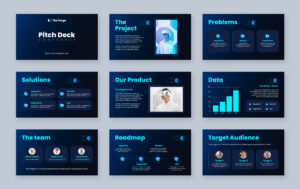The Rise of Spatial Computing: Transforming Human-Digital Interaction
Technology has come a long way from the days of flat screens and 2D interfaces. The next frontier in digital interaction is spatial computing—a groundbreaking technology that blends physical and virtual environments to create immersive, intuitive experiences. Spatial computing allows digital content to exist in three-dimensional space, enabling users to interact with data, applications, and machines naturally using gestures, voice, and movement. From virtual workspaces to intelligent industrial design, spatial computing is transforming how humans connect with the digital realm.
What Is Spatial Computing?
Spatial computing is the convergence of augmented reality (AR), virtual reality (VR), mixed reality (MR), and AI-driven sensors that enable computers to understand and interact with the physical world. It creates an environment where digital objects behave like real-world entities, responding to depth, motion, and environmental cues.
For instance, imagine designing a car in a virtual studio where engineers can walk around the 3D model, manipulate its parts in real time, and visualize aerodynamic flow. Spatial computing makes such experiences possible by combining computer vision, machine learning, and advanced sensor systems that bridge the gap between physical and digital realities.
The Technology Powering Spatial Computing
Spatial computing relies on a complex ecosystem of technologies that work in harmony:
-
AI and Machine Learning: These algorithms interpret real-world data and predict human behavior for accurate spatial interactions.
-
Computer Vision: Enables devices to recognize objects, track movements, and map environments in 3D.
To make all these technologies work efficiently, embedded software development services play a vital role. They ensure that the sensors, cameras, and processors communicate seamlessly with AI systems in real time. Without optimized embedded software, the synchronization between physical movement and virtual response would not be possible. These services help build the backbone of spatial devices like AR glasses, smart sensors, and gesture-recognition systems, ensuring accuracy, low latency, and reliable performance.
Applications of Spatial Computing
Spatial computing is not limited to entertainment—it’s revolutionizing multiple industries:
-
Healthcare: Surgeons can now use mixed-reality overlays for guided procedures, improving precision and patient safety.
-
Architecture and Design: 3D visualization allows architects to walk through digital models before construction even begins.
-
Manufacturing: Technicians use AR headsets for hands-free maintenance, receiving real-time data and visual guidance on machinery.
-
Retail and E-commerce: Customers can visualize products in their homes through AR apps, improving buying confidence.
-
Education: Students explore virtual environments, from historical landmarks to biological systems, creating immersive learning experiences.
These examples demonstrate how spatial computing is changing the way we work, learn, and interact with information.
Spatial Computing and the Future of Entertainment
The entertainment industry has been one of the biggest beneficiaries of spatial computing. The blending of physical and virtual environments allows for new forms of storytelling and interactive experiences. In particular, gaming has undergone a massive transformation. Players can now move freely in 3D space, interact with virtual objects, and experience games in an entirely new way.
Modern gaming systems powered by arcade game software are increasingly adopting spatial computing principles. Imagine arcade setups where players physically move within an environment, and the game responds in real-time to their gestures and position. This evolution from button-based interaction to full-body immersion makes gaming far more engaging. Spatial enhances this further with realistic physics, adaptive AI, and personalized gameplay that reacts to emotions, body language, and even biometric feedback.
Industrial and Business Potential
Beyond entertainment, computing holds immense potential for businesses and industries. Enterprises are using it for digital twins—virtual replicas of physical assets like factories or energy grids. These digital twins allow real-time monitoring, simulation, and optimization of operations without disrupting actual processes.
In logistics, workers equipped with AR glasses can visualize inventory data, improving warehouse efficiency. Similarly, remote collaboration tools powered by spatial computing allow teams across the globe to share virtual workspaces, brainstorm using 3D models, and manipulate designs as if they were physically present together.
The combination of AI, IoT, and spatial awareness is helping businesses cut costs, enhance safety, and innovate faster. As this ecosystem grows, industries that depend on visualization, training, or precision will increasingly rely on spatial technology.
Conclusion
Spatial computing marks the beginning of a new era where technology not only exists around us but also interacts with us naturally. By merging the physical and digital worlds, it opens endless possibilities for creativity, productivity, and entertainment.
With support from advanced AI, sensor networks, and embedded systems, spatial will redefine how we live, work, and play. As innovations continue to evolve, this technology promises to make our digital interactions more intuitive, immersive, and human-like than ever before.













